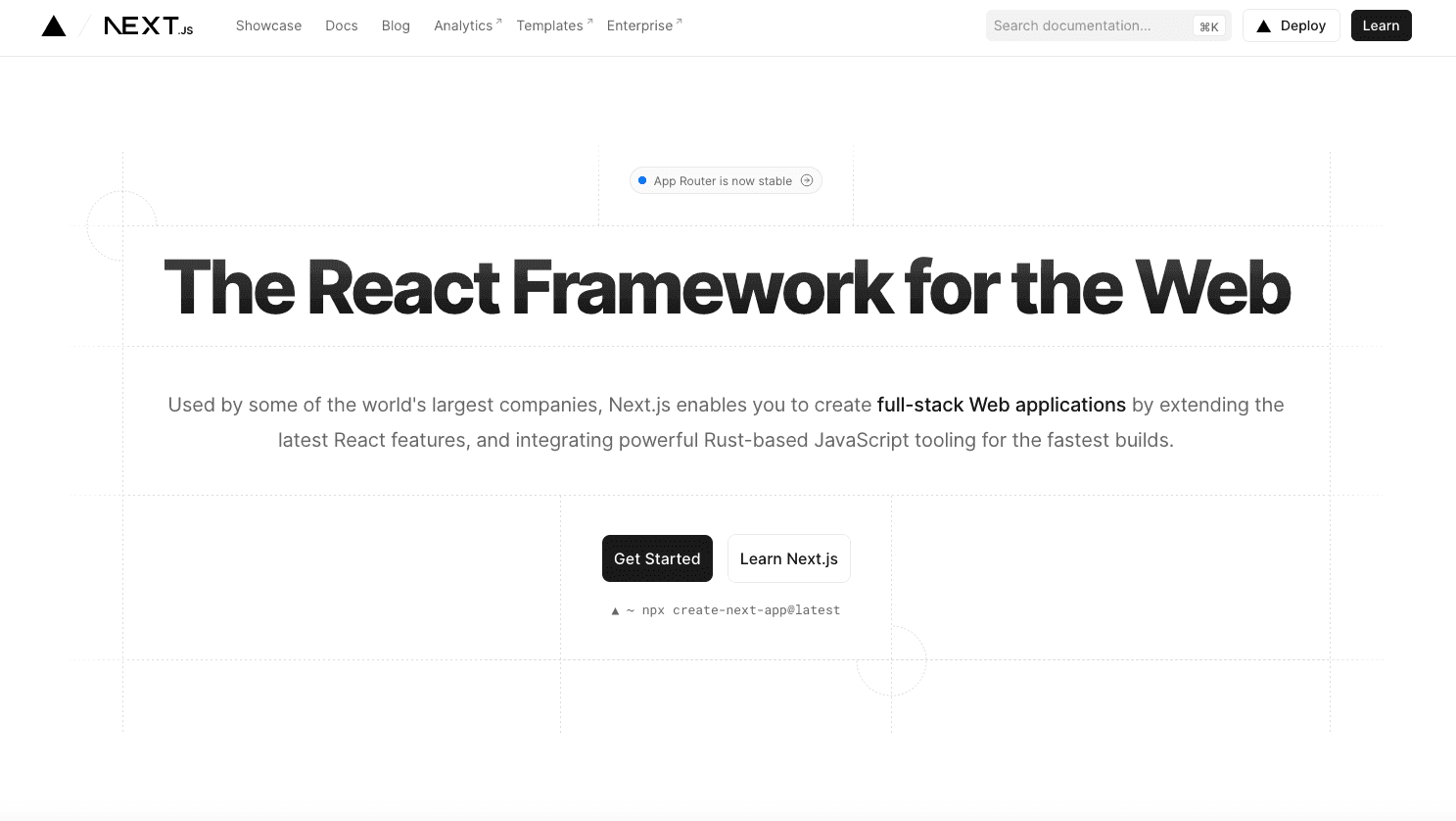Why Choose Next.js for Your Next Web Project?
- User Experience

When it comes to modern web development, selecting the proper framework can significantly impact the success and efficiency of your project. Next.js, a robust React-based framework, has been gaining popularity among developers worldwide. In this blog post, Kapsys will delve into why you should consider Next.js for your next web project, exploring its features, benefits, and practical applications.
What is Next.js?

Next.js is an open-source React front-end development framework that enables developers to build server-side rendering and static web applications. It's known for its ease of use, performance optimization, and versatile features. But why use Next.js over other frameworks? Let's explore its unique advantages.
Why Choose Next.js?
Choosing Next.js for your web development project can be a strategic decision for several compelling reasons. Next.js, an advanced framework built on top of React, offers a range of features that cater to modern web development needs. Here's why you might consider Next.js for your next project:
- Server-Side Rendering (SSR): Next.js allows for server-side rendering of your web pages. This is particularly beneficial for SEO, as it ensures that search engines can crawl and index your site's content effectively. It also leads to faster page load times, which enhances the user experience.
- Static Site Generation (SSG): Next.js provides the ability to pre-render pages at build time. This feature is excellent for sites where content doesn't change frequently, leading to lightning-fast page loads and reduced server load.
- Built-In Routing and Link Prefetching: Next.js comes with a file-system-based router built on the concept of pages. When a file is added to the
pagesdirectory, it's automatically available as a route. The framework also supports link prefetching out of the box, which preloads the page in the background for a faster user experience. - API Routes: Next.js allows you to create API routes, enabling the development of API endpoints as part of your Next.js application. This simplifies the architecture and eliminates the need for a separate backend server for basic APIs.
- Zero Configuration: Next.js works out of the box with minimal setup. It's configured with the best settings for production and development environments, making it easier for developers to start building without worrying about complex configurations.
- Enhanced Developer Experience: The framework provides features like fast refresh and built-in CSS support, which greatly improve the development experience. Fast refresh ensures that most edits are reflected instantly without losing component state.
- Community and Ecosystem: Being built on React, Next.js benefits from a strong community and ecosystem. There are numerous resources, plugins, and integrations available, making it a versatile choice for developers.
- Hybrid Rendering: Next.js offers the flexibility of both server-side rendering and static generation. This hybrid approach means you can choose the rendering method that best fits each page or component's needs.
- Scalability: Next.js is suitable for both small projects and large-scale applications. Its performance optimizations and efficient rendering make it a good fit for projects of any size.
- Enhanced Performance: Next.js applications tend to have excellent performance metrics, thanks to server-side rendering, static generation, and automatic code splitting. This leads to better user engagement and retention.

Deep Dive into Next.js Features
Next.js is a React-based framework that offers a multitude of features, making it an ideal choice for modern web development. Here's a deep dive into some of its key features:
1. Server-Side Rendering (SSR)
Next.js allows pages to be rendered on the server-side. This means that the HTML is generated for each request, improving page load times and SEO. SSR is particularly useful for dynamic content and ensures that search engines can index the content effectively.
2. Static Site Generation (SSG)
Next.js supports Static Site Generation, allowing you to pre-render pages at build time. This is perfect for pages with content that doesn't change often, resulting in faster loading times and better performance. You can also revalidate pages with new data, combining the benefits of static sites and server-rendered sites.
3. Automatic Code Splitting
Next.js automatically splits your code into small bundles, so users only load the JavaScript required for the page they visit. This results in faster page load times and improved performance.
4. API Routes
API routes allow you to create RESTful APIs directly within your Next.js application. This simplifies the process of building full-stack applications by removing the need for a separate backend.
5. File-system Routing
Next.js uses a file-system-based routing mechanism. Pages are automatically routed based on the file structure in the pages directory. This simplifies the creation and management of routes in your application.
6. Built-In CSS and Sass Support
Next.js has built-in support for CSS and Sass, which allows you to import stylesheets directly into your JavaScript files. It also supports CSS-in-JS libraries, like styled-components or emotion, for those who prefer inline styles.
7. Image Optimization
Next.js includes an Image component that automatically optimizes images for faster loading. It handles responsive loading by default and integrates with various content delivery networks.
8. Fast Refresh
Fast Refresh is a Next.js feature that provides instant feedback when you edit your React components. It preserves the state of your React components during a live edit, making the development process smoother and more intuitive.
9. TypeScript Support
Next.js offers out-of-the-box support for TypeScript, enabling developers to build more robust applications through type-checking.
10. Incremental Static Regeneration
This feature allows you to update static content after you’ve built your site. It regenerates static pages without needing to rebuild the entire site, ensuring your content is always up-to-date.
11. Internationalization
Next.js has built-in support for internationalized (i18n) routing. You can easily create locale-specific routes for your application, which is essential for global applications.
12. Custom Server and Routing
For advanced use cases, Next.js allows you to create a custom server with custom server-side routes. This offers more control over how requests are handled.
13. Environment Variables
Next.js has built-in support for environment variables, allowing you to store different settings for your development, test, and production environments securely.
14. Preview Mode
This feature enables content creators to preview their changes live before they're made public, which is particularly useful for CMS-based sites.

Conclusion
Choosing Next.js for your next web development project offers numerous advantages, from enhanced performance to ease of use. Whether you're building a small blog or a large-scale enterprise application, Next.js is equipped to handle your needs effectively.


